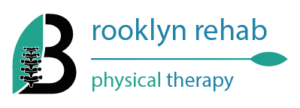Can Physical Therapy Help Sciatica? An In-Depth Analysis
Are you experiencing sciatica pain? Wondering if physical therapy can help alleviate your symptoms? Read on to find out everything you need to know about physical therapy and its role in treating sciatica.

Introduction
Sciatica is a painful condition that affects the sciatic nerve, which runs from the lower back to the legs. It can cause a range of symptoms, including pain, numbness, tingling, and weakness. While there are various treatments available for sciatica, physical therapy has emerged as a popular and effective option. In this article, we will explore the role of physical therapy in treating sciatica and answer some common questions about this form of treatment.
How Does Physical Therapy Help Sciatica?
Physical therapy is a non-invasive, drug-free treatment that focuses on restoring the body’s natural movement and function. When it comes to treating sciatica, physical therapy aims to reduce pain and improve mobility by addressing the underlying cause of the condition. Here are some of the ways physical therapy can help with sciatica:
Strengthening exercises – Physical therapists may recommend exercises that strengthen the muscles in the back, hips, and legs. Strengthening these muscles can help reduce pressure on the sciatic nerve and alleviate pain.
Stretching exercises – Stretching can help relieve muscle tension and improve flexibility, which can also reduce pressure on the sciatic nerve. Physical therapists may recommend a variety of stretches, including hamstring stretches, piriformis stretches, and lower back stretches.
Manual therapy – Physical therapists may use hands-on techniques like massage or joint mobilization to reduce muscle tension and improve joint mobility. This can help alleviate pain and improve function.
Education – Physical therapists can educate patients on proper posture, body mechanics, and ergonomics to help prevent future episodes of sciatica. They may also provide guidance on exercises and stretches that patients can do at home to manage their symptoms.
Can Physical Therapy Help with Acute Sciatica?
Acute sciatica refers to a sudden onset of symptoms, usually caused by a herniated disc or other spinal injury. While physical therapy can be helpful for treating acute sciatica, it’s important to seek medical attention first. In some cases, rest and medication may be necessary to manage acute sciatica symptoms before starting physical therapy.
Once a medical professional has cleared you for physical therapy, a physical therapist can work with you to develop a personalized treatment plan. This may include a combination of exercises, stretches, and manual therapy techniques to help alleviate pain and improve mobility.
Can Physical Therapy Help with Chronic Sciatica?
Chronic sciatica refers to long-term or recurring symptoms. Physical therapy can be an effective treatment option for chronic sciatica, as it can help address the underlying causes of the condition and improve overall function.
Physical therapists may recommend a variety of exercises and stretches to strengthen the muscles in the back, hips, and legs and improve flexibility. They may also use manual therapy techniques to alleviate muscle tension and improve joint mobility.
In addition to these interventions, physical therapists may also recommend lifestyle modifications to help manage chronic sciatica. This may include changes to diet, exercise habits, and sleep hygiene.
How Long Does Physical Therapy Take to Work for Sciatica?
The length of time it takes for physical therapy to work for sciatica can vary depending on the individual and the severity of their condition. Some people may experience relief after just a few sessions, while others may need to continue physical therapy for several weeks or months.
It’s important to remember that physical therapy is not a quick fix and may take time to produce results. However, with consistent effort and adherence to the treatment plan, many people with sciatica can experience significant improvement in their symptoms.
The duration of physical therapy treatment can also depend on the type of physical therapy being used. For example, a patient may require a longer course of physical therapy if they are undergoing manual therapy or other hands-on techniques.
It’s important to communicate openly with your physical therapist about your progress and any concerns you may have. Your therapist can adjust your treatment plan as needed to ensure you are getting the most out of your therapy sessions.
FAQs:
Q) Is physical therapy the only treatment for sciatica?
While physical therapy can be an effective treatment for sciatica, it is not the only treatment option available. Other treatments may include medication, chiropractic care, acupuncture, or surgery in more severe cases.
Q) Can I do physical therapy on my own?
While there are many exercises and stretches that can be done at home, it is important to work with a licensed physical therapist to ensure you are performing them correctly and safely. A physical therapist can also monitor your progress and adjust your treatment plan as needed.
Q) Is physical therapy painful?
Physical therapy should not be painful. While some exercises and stretches may be uncomfortable, your physical therapist will work with you to ensure you are staying within your limits and not causing further injury.
Q) How do I know if physical therapy is right for me?
If you are experiencing sciatica symptoms, it is recommended that you speak with your healthcare provider about treatment options. They can help determine if physical therapy is appropriate for your individual needs.
Conclusion
Sciatica can be a debilitating condition that significantly impacts quality of life. While there are various treatments available, physical therapy has emerged as an effective and non-invasive option for many individuals. By addressing the underlying causes of sciatica and improving mobility, physical therapy can help reduce pain and improve function. If you are experiencing sciatica symptoms, speak with your healthcare provider about whether physical therapy may be right for you.
